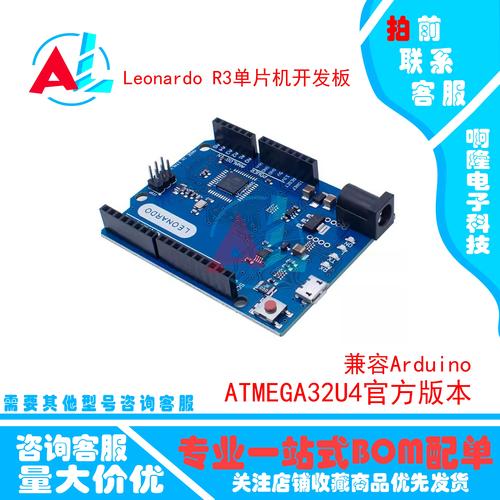
Arduino Leonardo vs Arduino Leonardo ETH: A Detailed Comparison
When it comes to Arduino boards, the Leonardo family is quite popular among hobbyists and professionals alike. The Arduino Leonardo and the Arduino Leonardo ETH are two of the most sought-after boards in this series. In this article, we will delve into a comprehensive comparison of these two boards, highlighting their features, specifications, and use cases.
Overview
The Arduino Leonardo is a microcontroller board based on the ATmega32U4. It has 20 digital input/output pins (of which 7 can be used as PWM outputs), 6 analog inputs, 4 UARTs (hardware serial ports), a 16 MHz crystal oscillator, and a USB connection. The Arduino Leonardo ETH, on the other hand, is an extension of the Leonardo board, featuring an Ethernet module that allows it to connect to a local network or the internet.

Physical Specifications
Let’s start by comparing the physical specifications of both boards.
| Feature | Arduino Leonardo | Arduino Leonardo ETH |
|---|---|---|
| Dimensions | 68.6mm x 53.4mm | 68.6mm x 53.4mm |
| Weight | 20g | 20g |
| Power Supply | 7-12V | 7-12V |
| Input Voltage (recommended) | 7-12V | 7-12V |
| Input Voltage (limits) | 6-20V | 6-20V |
| Digital I/O Pins | 20 (of which 7 provide PWM output) | 20 (of which 7 provide PWM output) |
| Analog Input Pins | 6 | 6 |
| ADC Resolution | 10-bit | 10-bit |
| EEPROM | 1 KB (of which 512 bytes used by bootloader) | 1 KB (of which 512 bytes used by bootloader) |
| Flash Memory | 32 KB (of which 4 KB used by bootloader) | 32 KB (of which 4 KB used by bootloader) |
| SRAM | 2.5 KB | 2.5 KB |
| EEPROM | 1 KB (of which 512 bytes used by bootloader) | 1 KB (of which 512 bytes used by bootloader) |
| USB Connection | Yes | Yes |
| Programming Method | USB | USB |
As you can see, the physical specifications of both boards are quite similar. The only difference is the presence of the Ethernet module in the Arduino Leonardo ETH.
Features and Capabilities
Now, let’s discuss the features and capabilities of both boards.
Arduino Leonardo
The Arduino Leonardo is a versatile board that can be used for a wide range of applications. Some of its key features include:
- ATmega32U4 microcontroller
- 20 digital I/O pins
- 6 analog inputs
- 4 UARTs (hardware serial ports)



